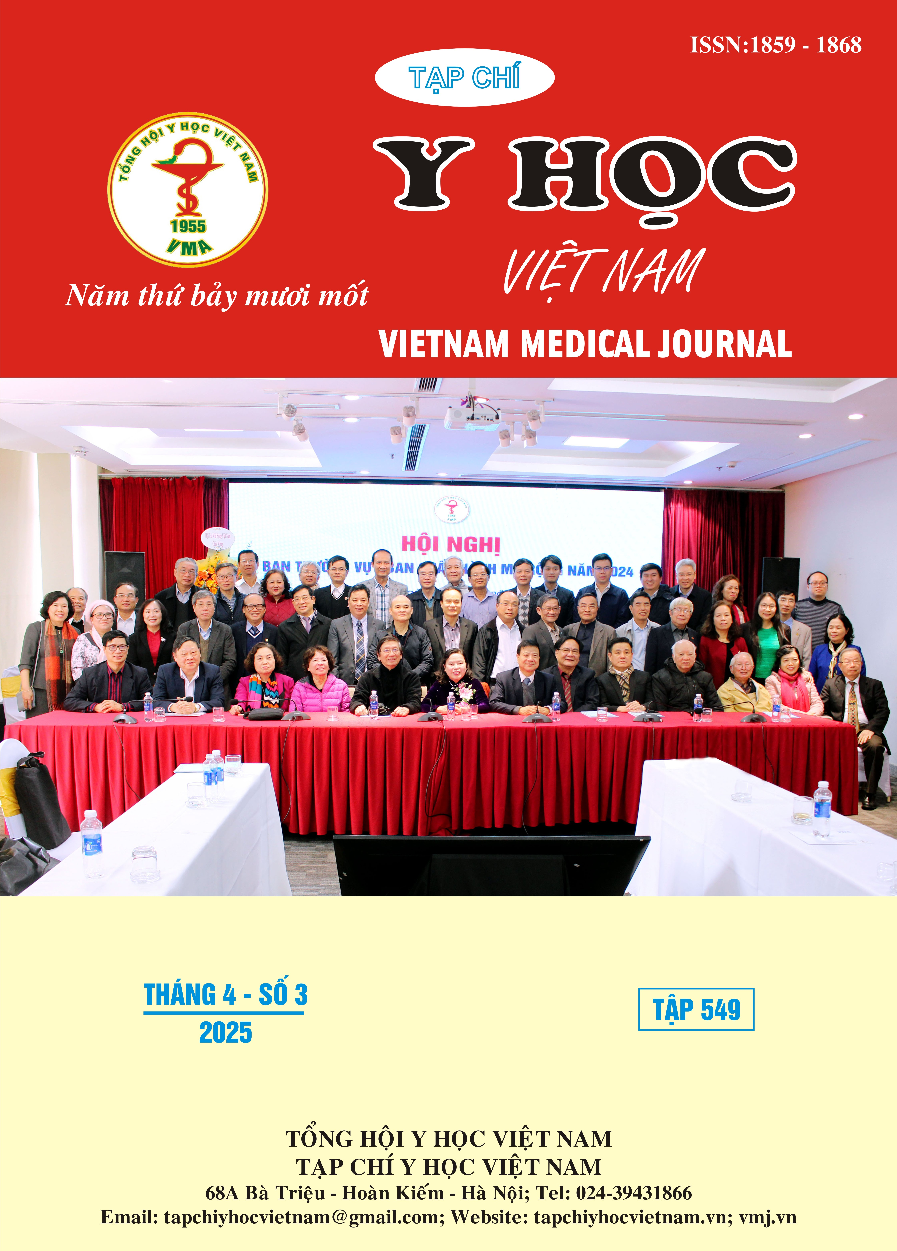RELATIONSHIP BETWEEN AIRWAY PRESSURE AND ENDOTRACHEAL TUBE CUFF PRESSURE IN LAPAROSCOPIC SURGERY
Main Article Content
Abstract
Background: Although endotracheal tube (ETT) cuff pressure is adjusted within the safe range, increases in peak airway pressure caused by intraperitoneal CO2 insufflation can elevate the ETT cuff pressure, thereby compromising tracheal mucosal perfusion and increasing the risk of postoperative complications.Objective: To determine the correlation between ETT cuff pressure and peak airway pressure, and related factors in laparoscopic surgery. Methods: A descriptive cross-sectional study conducted on patients undergoing laparoscopic surgery under general anesthesia and mechanical ventilation, using cuffed endotracheal tubes. Results: A total of 47 patients underwent laparoscopic surgery in the Trendelenburg position and 53 patients underwent laparoscopic surgery in the reverse Trendelenburg position were included in the study. After CO2 insufflation, the ETT cuff pressure increased from a baseline of 25 cmH2O to 31.3 ± 2 cmH2O in the Trendelenburg group (p < 0.001) and to 30.6 ± 1.8 cmH2O in the reverse Trendelenburg group (p < 0.001). The ETT cuff pressure continued to rise to 32.4 ± 2.6 cmH2O following the change to the Trendelenburg position (p = 0.03), whereas no significant difference was observed with the reverse Trendelenburg position (p > 0.05). At the time of CO2 insufflation, the increase in peak airway pressure positively correlated with the increase in ETT cuff pressure, with a correlation coefficient of r = 0.5 (p < 0.001). Conclusion: There was a statistically significant increase in ETT cuff pressure following CO2 insufflation and Trendelenburg position transition. Although the ETT cuff pressure was adjusted within the safe range, the elevated peak airway pressure was still transmitted to the ETT cuff, leading to an increase in cuff pressure.
Article Details
Keywords
cuff pressure, endotracheal tube, laparoscopic surgery
References
2. Johny P, Segaran S, Vidya MV, et al. A comparative study of cuff pressure changes of endotracheal tube with the use of air versus nitrous oxide in the anaesthetic gas mixture during laparoscopic surgery. Turk J Anaesthesiol Reanim. 2022;50(4):261-266.
3. Kwon Y, Jang JS, Hwang SM, et al. The change of endotracheal tube cuff pressure during laparoscopic surgery. Open Med (Wars). 2019;14:431-436.
4. Mahoori A, Khanahmadi S, Khanahmadi S, et al. Evaluation of the endotracheal tube cuff pressure changes during cardiac operations under cardiopulmonary bypass. J Cardiovasc Thorac Res. 2023;15(1):51-56.
5. Rosero EB, Ozayar E, Eslava-Schmalbach J, et al. Effects of increasing airway pressures on the pressure of the endotracheal tube cuff during pelvic laparoscopic surgery. Anesth Analg. 2018;127(1):120-125.
6. Wang C, Yan X, Gao C, et al. Effect of continuous measurement and adjustment of endotracheal tube cuff pressure on postoperative sore throat in patients undergoing gynecological laparoscopic surgery: a randomized controlled trial. J Clin Monit Comput. 2024.
7. Wu CY, Yeh YC, Wang MC, et al. Changes in endotracheal tube cuff pressure during laparoscopic surgery in head-up or head-down position. BMC Anesthesiol. 2014;14:75.
8. Zhu G, Wang X, Cao X, et al. The effect of different endotracheal tube cuff pressure monitoring systems on postoperative sore throat in patients undergoing tracheal intubation: a randomized clinical trial. BMC Anesthesiol. 2024;24(1):115


